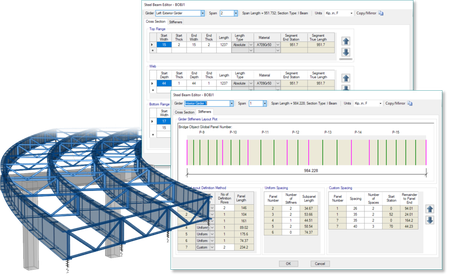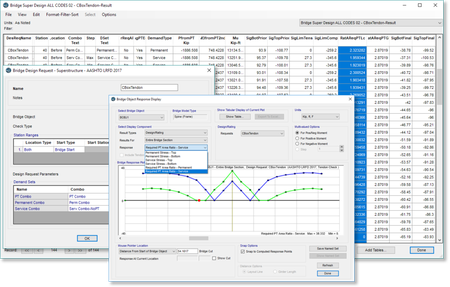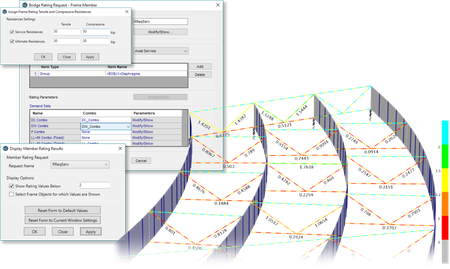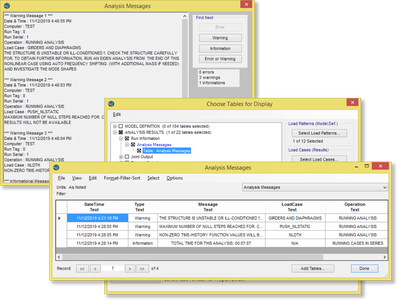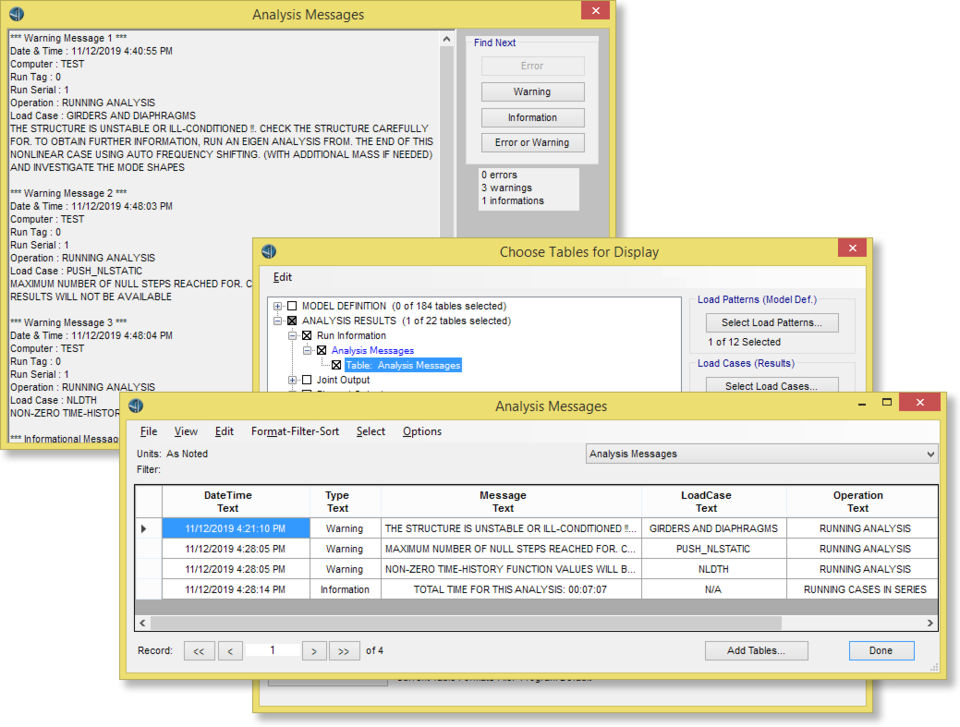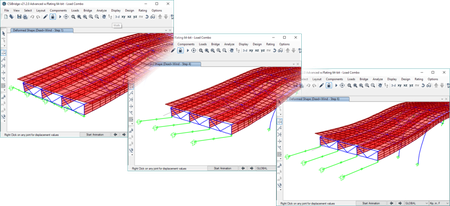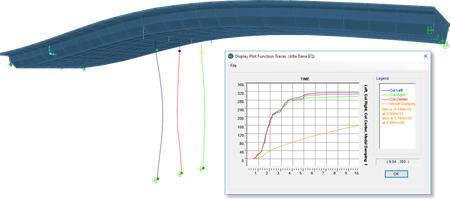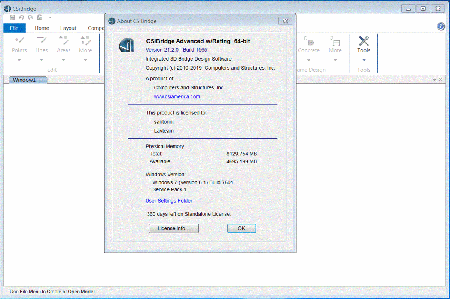CSiBridge 21.2.0 | 822.8 mb
Computers and Structures, Inc. (CSI) is pleased to announce the availability of Bridge version 21.2.0. New enhancements have been implemented in latest update related to Bridge Modeling, Analysis and Bridge Design.
CSiBridge 21.2.0 Enhancements - Release Date: 15 Nov 2019 :
Bridge Modeler
Ability to specify steel I-girder plate sizes and web stiffeners prior to running analysis, design, or rating
Bridge Design & Rating
Concrete box girder bridge design request to determine required tendon area to satisfy stresses under permanent and service load conditions is now available
Steel frame rating has been added for axial demands and user specified resistances
Analysis
Analysis errors, warnings, and informational messages are now stored and shown after the analysis completes, as well as accessible via database tables
Results Display & Output
Load combination results are now available on a step-by-step basis for linear load combinations containing one or more stepped load cases
Nonlinear energy component output is now available per group for nonlinear load cases
This file (ReleaseNotesCSiBridgev2120.pdf) lists all changes made to CSiBridge since the previous version.
CSiBridge is specialized analysis and design software tailored for the engineering of bridge systems. Suspension, cable-stay, elevated-roadway, and other types of bridge systems may be modeled and designed to suit any one of a variety of purposes, including means for crossing water, linking points between shear terrain, or extending over highway infrastructure. Customized controls and features integrate across a powerful object-based modeling environment to offer an intuitive, practical, and productive computational tool for bridge engineering. Advanced modeling features and sophisticated analysis techniques account for dynamic effects, inelastic behavior, and geometric nonlinearity. Code-based templates streamline the engineering process from model definition through analysis, design optimization, and the generation of comprehensive output reports. CSiBridge is the premier software for bridge engineering.
CSiBridge - 11 Modeling using Staged Construction
Founded in 1975, Computers and Structures, Inc. (CSI) is recognized globally as the pioneering leader in software tools for structural and earthquake engineering. Software from CSI is used by thousands of engineering firms in over 160 countries for the design of major projects, including the Taipei 101 Tower in Taiwan, One World Trade Center in New York, the 2008 Olympics Birds Nest Stadium in Beijing and the cable-stayed Centenario Bridge over the Panama Canal. CSI's software is backed by more than three decades of research and development, making it the trusted choice of sophisticated design professionals everywhere.
Product: CSI Bridge
Version: 21.2.0 Build 1565 Advanced w/Rating
Supported Architectures: x64
Website Home Page : www.csiamerica.com
Language: english
System Requirements: PC *
Supported Operating Systems: *
Size: 822.8 mb
Processor
- Minimum: Intel Pentium 4 or AMD Athlon 64
- Recommended: Intel i5/i7, AMD Athlon X4/Ryzen, or better
- A 64-bit CPU is required
- The SAPFire Analytical Engine includes multi-threaded solvers and algorithms that can take advantage of multi-core CPUs. The design algorithms can also utilize multiple cores.
Operating System
- Microsoft Windows 7, Microsoft Windows 8 or Microsoft Windows 10
- 64-bit processor
Video Card
- Minimum: Supporting 1024 by 768 resolution and 16 bits colors for standard (GDI+) graphics mode
- Recommended: Discrete video card with NVIDIA GPU or equivalent and dedicated graphics RAM (512 Mb or larger) for DirectX graphics mode. The card must be DirectX 11 Compatible.
- DirectX graphics mode fully utilizes the hardware acceleration provided by a GPU and dedicated graphics RAM.
- For better graphics quality in terms of anti-aliasing and line thickness, the device raster drawing capabilities should support legacy depth bias.
Memory
- Minimum: 8 GB RAM
- The problem size that can be solved and the speeds for solution & response recovery increase considerably with more RAM.
Disk Space
- 6 GB to install the software.
- Additional space will be required for running and storing model files and analysis results, dependent upon the size of the models
- Recommended: 500GB or larger PCIe Solid State Drive (SSD). External and network drives are not recommended.
- Minimum: Intel Pentium 4 or AMD Athlon 64
- Recommended: Intel i5/i7, AMD Athlon X4/Ryzen, or better
- A 64-bit CPU is required
- The SAPFire Analytical Engine includes multi-threaded solvers and algorithms that can take advantage of multi-core CPUs. The design algorithms can also utilize multiple cores.
Operating System
- Microsoft Windows 7, Microsoft Windows 8 or Microsoft Windows 10
- 64-bit processor
Video Card
- Minimum: Supporting 1024 by 768 resolution and 16 bits colors for standard (GDI+) graphics mode
- Recommended: Discrete video card with NVIDIA GPU or equivalent and dedicated graphics RAM (512 Mb or larger) for DirectX graphics mode. The card must be DirectX 11 Compatible.
- DirectX graphics mode fully utilizes the hardware acceleration provided by a GPU and dedicated graphics RAM.
- For better graphics quality in terms of anti-aliasing and line thickness, the device raster drawing capabilities should support legacy depth bias.
Memory
- Minimum: 8 GB RAM
- The problem size that can be solved and the speeds for solution & response recovery increase considerably with more RAM.
Disk Space
- 6 GB to install the software.
- Additional space will be required for running and storing model files and analysis results, dependent upon the size of the models
- Recommended: 500GB or larger PCIe Solid State Drive (SSD). External and network drives are not recommended.
Please visit my blog
Added by 3% of the overall size of the archive of information for the restoration
No mirrors please
Added by 3% of the overall size of the archive of information for the restoration
No mirrors please




